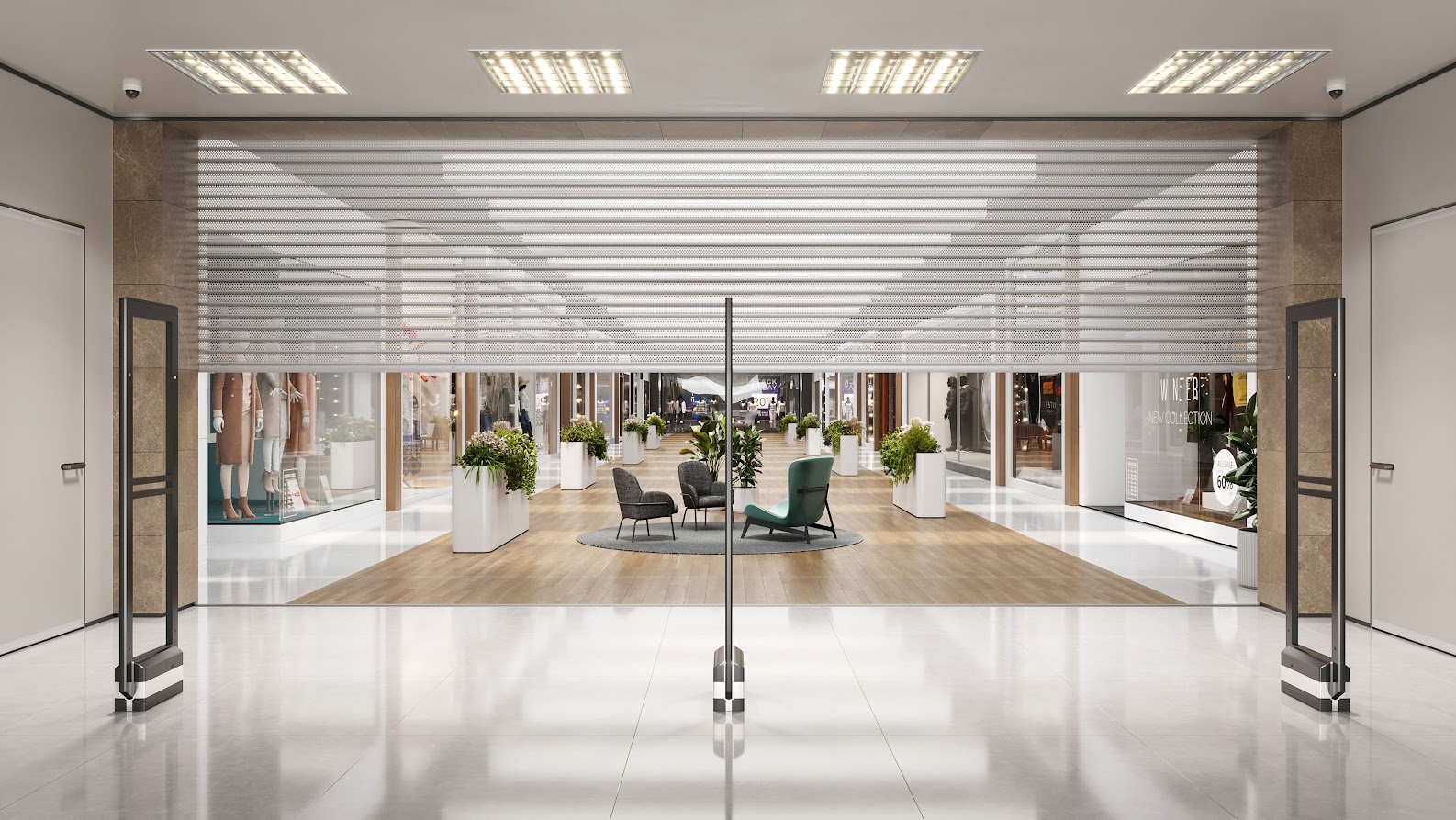The entire retail industry is dealing with record levels of retail theft and organized retail crime, but luxury brands face some of the biggest challenges. From designer fashion boutiques to high-end jewelry stores, luxury retailers are frequent targets of burglary, smash-and-grab theft, crash-and-grabs, and other forms of retail theft.
While there’s the obvious potential for financial loss and operational disruptions due to such incidents of theft, these crimes can also have a negative, traumatic effect on employees and customers who happen to be present during a violent incident, making it even more important to take a proactive approach to luxury retail security.
But high-end retailers also face the tricky challenge of increasing security without detracting from the overall brand experience. They must implement the right combination of strategies to protect merchandise, customers, and staff, all while maintaining a sophisticated, luxury experience for their clientele.
Luxury Retail Security Challenges
Luxury retail security encompasses a variety of retail categories, from high-end clothing and accessory brands to jewelers, electronics stores, and art galleries. Retailers dealing in luxury goods such as designer fashion, fine jewelry, luxury watches, high-tech electronics, and collectibles are typically the primary focus.
These stores often carry items of high monetary value that are small and easy to conceal or transport, not to mention easy and highly lucrative to resell, making them especially attractive to thieves.
Luxury brands are also often located in heavily trafficked, upscale areas, increasing their visibility and making them prime targets for both individual thieves and organized retail crime groups.
These types of retailers are known for providing exclusive, high-end experiences to customers, which creates unique challenges. They must balance an inviting, sophisticated shopping environment with rigorous luxury retail security measures — an equation that requires nuanced and strategic approaches to ensure loss prevention.
The Rise of Luxury Retail Security Threats
The increase in retail crime targeting luxury retailers isn’t an isolated trend, but rather part of a broader, concerning rise in organized retail crime across the industry. However, several factors have led to a disproportionate impact on luxury retailers.
Some of these factors include the high resale value of luxury items, a trend of highly organized smash-and-grab or crash-and-grab theft techniques that work particularly well in luxury stores, and overall increased sophistication among criminal groups.
High Resale Value and Ease of Fencing
High-end items like designer bags, jewelry, and electronics fetch a premium on the black market and in online marketplaces. The rapid growth of online resale platforms has also made it easier for stolen goods to be quickly sold, sometimes even before a store that’s been hit by thieves has filed a formal police report.
Organized Retail Crime Rings
Luxury items are often targeted by organized retail crime rings, which operate with a high level of coordination and planning. These groups may conduct reconnaissance to assess security vulnerabilities and time their attacks for maximum impact.
Some organized retail crime rings even have sophisticated networks in place to facilitate the movement of stolen goods across state or national borders, often to nearby countries like Mexico, making recovery of inventory incredibly challenging.
High-Tech Tactics and Digital Threats
Beyond physical theft, luxury brands also face security challenges in the digital realm. Cybercriminals may target customer data or attempt fraud schemes, sometimes through insider information or phishing attacks that compromise employee credentials. As such, digital security has become an essential layer in protecting luxury retail brands.
Luxury Retail Security Strategies
To protect against retail security threats, luxury retailers must employ a combination of physical, technological, and procedural security measures. Here are some key strategies that have proven effective in the industry:
Increased Physical Security Measures
Traditional luxury retail security measures, such as surveillance cameras, alarm systems, and security personnel, remain critical. However, luxury retailers must often go beyond these basic measures and build layers of protection to mitigate modern retail security threats.
For example, reinforced glass storefronts and display cases, bollards outside store entrances, locked security cases, and high-security entry and exit doors can mitigate smash-and-grab and crash-and-grab incidents. Security shutters can also provide additional after-hours protection against burglary.
Some retailers even adopt innovative architectural design principles, such as door designs that control the flow of foot traffic or planters in front of storefront windows to prevent vehicle ramming. Such design choices subtly incorporate security into the aesthetics and layout of the store, balancing security with a luxury ambiance.
Investment in Access Control
Luxury stores often employ sophisticated access control systems to limit entry during high-risk periods or in areas with lots of foot traffic or that are prone to incidences of retail theft.
Louis Vuitton, Chanel, and Cartier are a few examples of luxury brands whose stores sometimes require customers to wait outside and be buzzed in before entering, especially during peak hours. Customers can also make an appointment to be attended at a certain time.
These controlled entry systems strike a balance between offering a personalized, secure shopping experience and managing risk. They also help enhance the exclusivity and personalized service that high-end customers expect, ensuring that staff can focus on providing a luxury experience in a more controlled, secure environment.
Partnership with Local Law Enforcement and Security Firms
Collaborating with law enforcement and specialized security firms helps luxury retailers gain insights into recent crime trends and potential threats.
In many cities, police have dedicated resources to combat organized retail crime, and luxury retailers can benefit from these resources.
Luxury brands may also participate in local retail security coalitions, sharing information about recent incidents to help prevent future crimes.
Training Employees on Security Awareness and Protocols
Employees play a crucial role in preventing theft and ensuring customer safety. Comprehensive security training, including training on situational awareness, threat identification, and emergency protocols, prepares staff to act quickly during an incident.
Many luxury retailers are implementing regular, scenario-based training sessions where employees can practice handling specific types of theft or threat situations. This training not only improves employees’ response capabilities but can also reduce the psychological impact of a traumatic event by giving employees the tools they need to feel prepared.
Leveraging Technology and AI for Security
Advancements in technology have introduced a range of new tools that can support luxury retail security efforts beyond traditional and physical security measures.
AI-powered video analytics, for example, can help monitor customers in a store, analyzing their behavior in real-time and looking for unusual behavioral patterns to identify potential threats before they escalate. This allows employees and security staff to respond proactively.
Predictive analytics tools can also analyze historical data to forecast high-risk periods, allowing luxury retailers to adjust staffing or security measures accordingly.
Cybersecurity Measures
Given that luxury retailers are often targeted by cybercriminals who are after customer data and payment information, it’s essential to implement strong cybersecurity protocols. This may include regular penetration testing (simulated cyber attacks that test cybersecurity measures), multi-factor authentication for employee accounts, and secure, encrypted transaction systems.
Educating employees on phishing risks and password hygiene can also help prevent breaches that originate from social engineering attacks.
The Bottom Line
The stakes are higher than ever for luxury retailers facing escalating theft-related security threats. Not only is there a financial impact, but incidents of theft and violence can disrupt business operations, cause psychological harm to employees and customers, and even damage a brand’s reputation.
To effectively address luxury retail security challenges, retailers must take a multi-layered approach to security that incorporates physical security measures, advanced technology, and other best practices.
By combining these strategies, luxury brands can create a safer, more secure environment for their customers and staff without compromising on the exclusivity and sophistication that their clientele expect.
It’s important to remember that luxury retail security isn’t just about protecting high-value merchandise from thieves, either, but rather it’s about preserving the entire brand image and experience!

